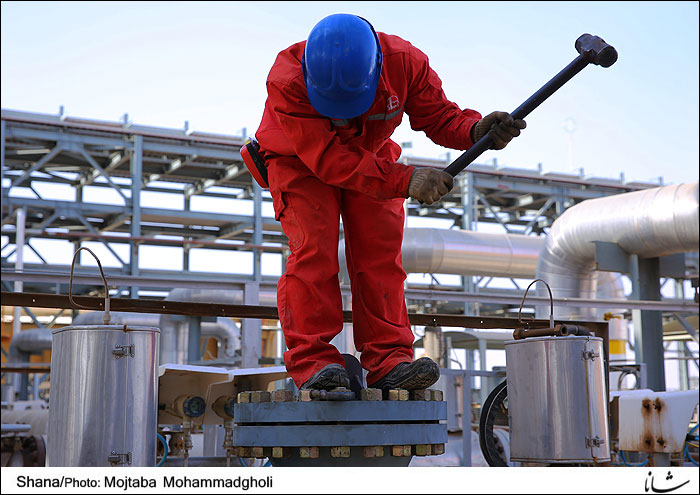Operations have already begun for the development of West Karoun oil fields in western Iran. The client is Petroleum Engineering and Development Company (PEDEC) and Iranian and Chinese contractors are developing these reservoirs.
Iran Petroleum, whose correspondent recently visited West Karoun oil fields, provides a review of the oil reservoirs.
In addition to common problems, development of this field was facing the big challenge of Hoor al-Azim Lagoon and environmental issues. A large segment of North Azadegan lies in the lagoon and PEDEC has modified drilling methods in order to protect the environmentally significant lagoon.
Keramat Behbahani, director of North Azadegan development project, said oil and gas production from this field averages at 73,000 b/d and 39 mcf/d, respectively.
Behbahani said some delays in the implementation of the project pertain to getting environmental and local permits, adding: "Drilling operations in this field were specific because a significant part of this field in Hoor al-Azim Lagoon. we were 4 to 5 meters deep in water in some spots and in practice we were facing an offshore environment."
Behbahani referred to the existence of an independent power plant in North Azadegan field, describing it as a valuable contributor to sustainable production of this field.
Behbahani said the second phase of this project envisages production of 75,000 b/d of crude oil and 39 mcf/d of gas.
"After examining the MDP proposed by the Chinese company to PEDEC and its approval, development of the second phase will start under a buy-back deal. In case of no agreement with CNPCI, the second phase development will be done under Iran Petroleum Contract (IPC)," he added.
According to preliminary studies, North Azadegan is estimated to hold 6.5 billion barrels of oil in place, 330 million barrels of which is recoverable. New studies suggest an increase in the in-situ reserves of this field. In the first phase, North Azadegan will be able to produce 82,500 b/d.
North Azadegan shot to prominence two years ago after Iran’s Minister of Petroleum Bijan Zangeneh decided to cancel the contract with CNPCI because the Chinese company did not observe its obligations regarding the development of the oil field. After that the development project was assigned to a consortium of Iranian contractors. Now, early production from North Azadegan that will continue in two phases stands at 50,000 b/d. By September, the early output will increase 30,000 b/d and months later it will see another 30,000 b/d increase. In the end, with the full implementation of early production plan, the output of North Azadegan will exceed 110,000 b/d.
Marashi said development of South Azadegan oil field envisages drilling 185 wells, adding that 38 wells have so far been drilled and 132 wells are planned to be spudded. He said that drilling of 32 wells is being put out to tender.
He said that drilling each well cost $12.5 million in 2014, while the figure has sharply dropped to $7.5 million for drilling each well. He attributed this decline in costs to the implementation of Iran’s historic nuclear deal with six world powers, dubbed as the Joint Comprehensive Plan of Action (JCPOA). The deal, which was struck in July 2015, came into effect in January.
He said that during preliminary talks, Total agreed to submit a technical proposal to National Iranian Oil Company (NIOC) and a confidentiality agreement was signed to that effect.
Yadavaran Deposits Increase
The objective behind the first phase development of Yadavaran was 85,000 b/d and currently 100,000 b/d (83,000 b/d of light crude oil and 17,000 b/d of heavy crude oil) is being recovered from this field.
“Since the start of early production plan, some 54 million barrels have been recovered from this field,” he said.
Nazarpour said Yadavaran was initially supposed to be developed in three phases.
Fahlian oil layer at Yadavaran field is light with API at 40, while Sarvak layer with API of 24 is heavy. The share of domestic manufacturing in Yadavaran field is more than 50%.
In the third phase, production from Yadavaran is planned to plateau at 300,000 b/d.
North Yaran is the only oil field in west karoon whose development under a buyback deal has been awarded to an Iranian contractor (Persia Oil and Gas Industry Development Company). According to PEDEC officials, this Iranian contractor has fared well in this field.
“Drilling operations for 20 production wells (in no man’s land) are over and production from this field will start in September after installation of wellhead equipment,” he said.
Baqerzadeh highlighted a 71% share of Iranian companies and manufacturers in this project, adding: “We have tried our best to use domestic commodities and equipment as much as possible and the items whose construction and supply were not possible in the country have been procured by European countries. Meantime, drilling operations for the development of North Yaran field have been completely done by Iranian contractors.”
Baqerzadeh said early production from this field started in February 2013 with a capacity of 5,000 b/d. So far, more than 1.4 million barrels of oil has been produced from this field.
Infrastructure Ready for Oil Delivery
According to PEDEC officials, the infrastructure for transferring crude oil produced in the West Karoun fields is now ready.
“In the next step, in order to realize the delivery of 300,000 b/d of crude oil to export terminals, there is plan for using West Karoun and Omidieh pumping facilities and a 32-inch pipeline,” he said.
“We need to boost the capacity of pumping facilities in order to be able to transfer 700,000 b/d of oil produced [at West Karoun] to export terminals by the end of the [calendar] year 1397 (20 March 2019),” he said.
He said that the construction of a 1,000-kilometer pipeline, 42 meters in diameter, for the transfer of crude oil to Jask area is in the stage of preliminary studies.
By Hamid-Reza Shakeri-Rad
Iran Petroleum


Your Comment